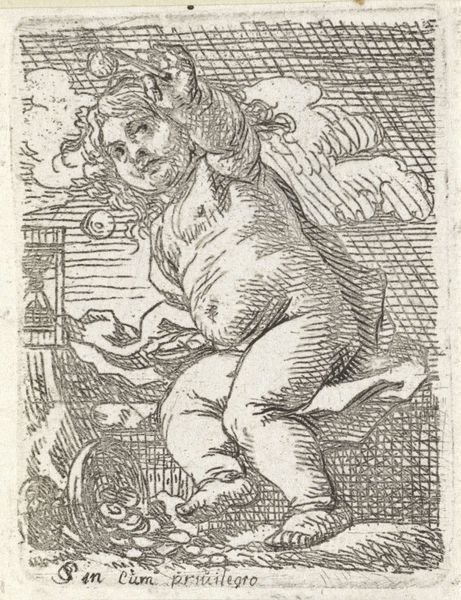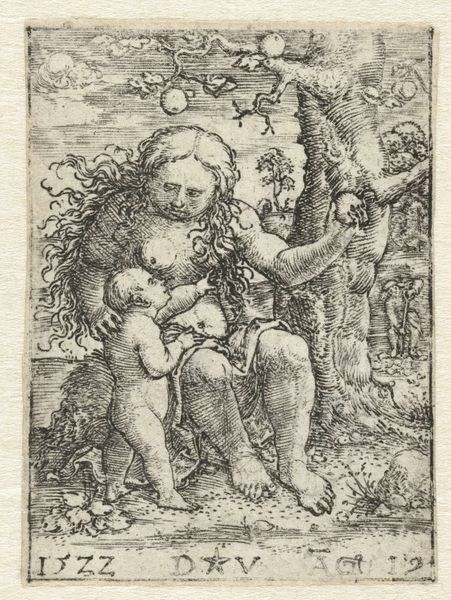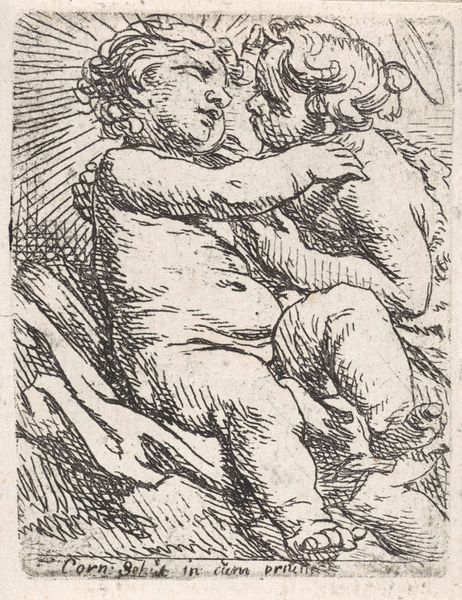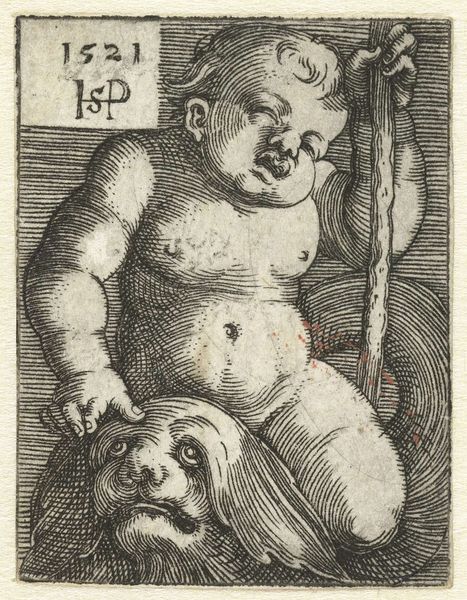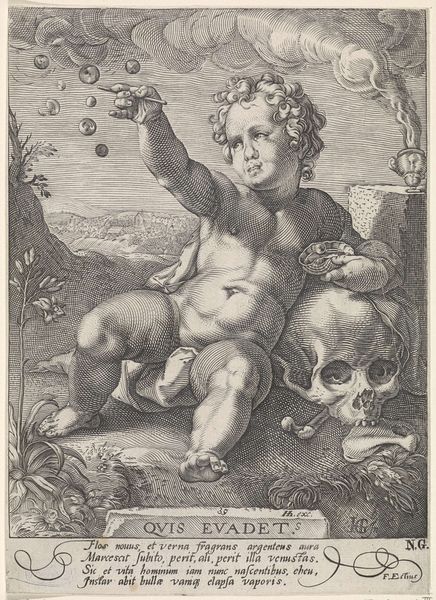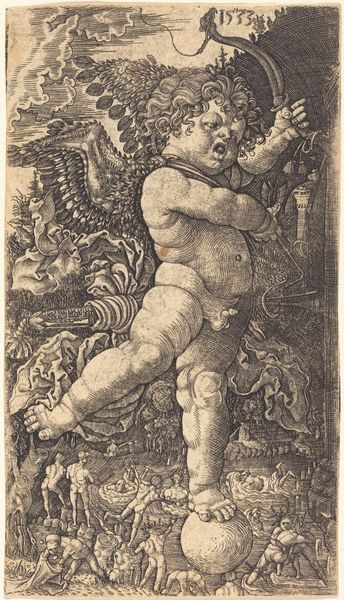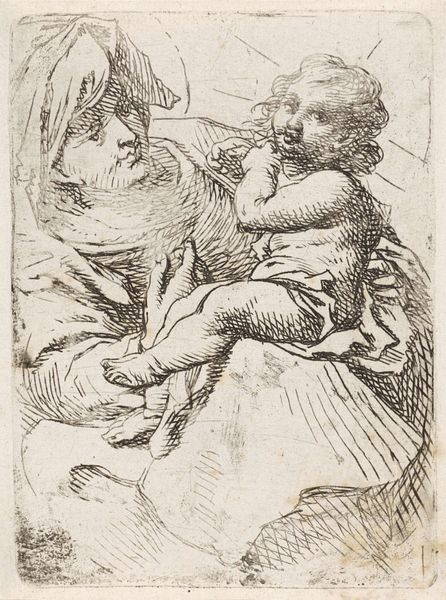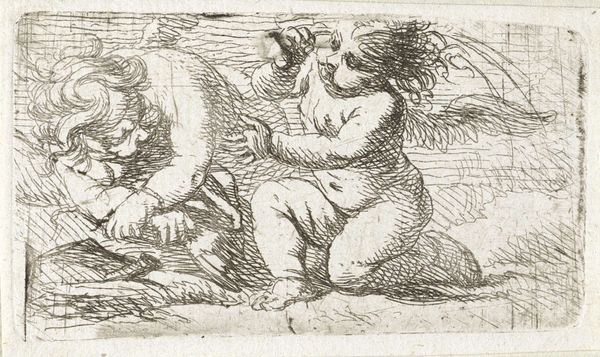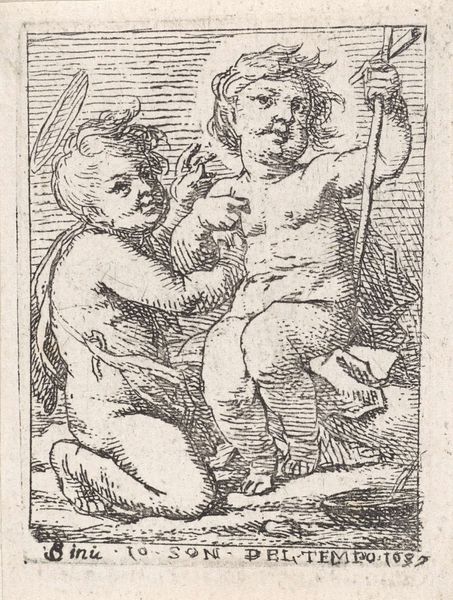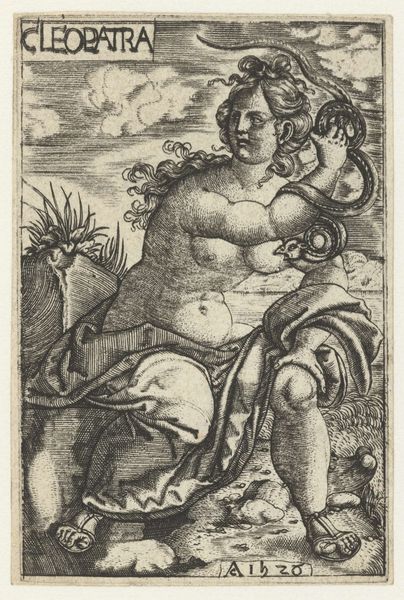
print, engraving
#
allegory
#
baroque
#
pen drawing
#
mechanical pen drawing
# print
#
pen illustration
#
pen sketch
#
old engraving style
#
ink line art
#
vanitas
#
pen-ink sketch
#
pen work
#
sketchbook drawing
#
engraving
#
doodle art
Dimensions: height 62 mm, width 52 mm
Copyright: Rijks Museum: Open Domain
Editor: Here we have Cornelis Schut’s "Allegorie op de ijdelheid," created sometime between 1618 and 1655. It’s an engraving currently held in the Rijksmuseum. There's something incredibly stark about the contrast between the plump baby and the skull. What's your take on it? Curator: Well, at first glance, the “vanitas” symbolism leaps out. The skull, of course, representing mortality, combined with the fleeting bubble held by the child… But let's think about this image in its historical context. The Dutch Golden Age saw an explosion of wealth and global trade, and these vanitas images served as moral reminders amidst that boom. How might this print have functioned within that social landscape? Editor: As a sort of...public service announcement? A cautionary tale against excess and pride? Curator: Precisely! These weren't just personal meditations; they were circulating images, often printed and reprinted, shaping public perceptions and anxieties around wealth and morality. The presence of the child, blowing bubbles—traditionally symbols of brevity of life— adds another layer of irony, highlighting the short and carefree existence of those privilaged, unaware of the fleeting nature of life. It encourages questions: For whom was it intended, and how were these visual messages received and interpreted by diverse audiences at the time? What might the artist be implying? Editor: So, beyond the individual symbolism, it's about understanding how art played a role in shaping social values. It's pretty thought-provoking to consider an image not just for its artistic merit but also as a kind of social tool. Curator: Absolutely. Looking closely allows us to unpack layers of historical meaning. Hopefully, more visitors will understand this as a symbol of social structure rather than a grim message of death! Editor: This really highlighted the layers within historical art, not just visual storytelling, but also understanding social critique!
Comments
No comments
Be the first to comment and join the conversation on the ultimate creative platform.

